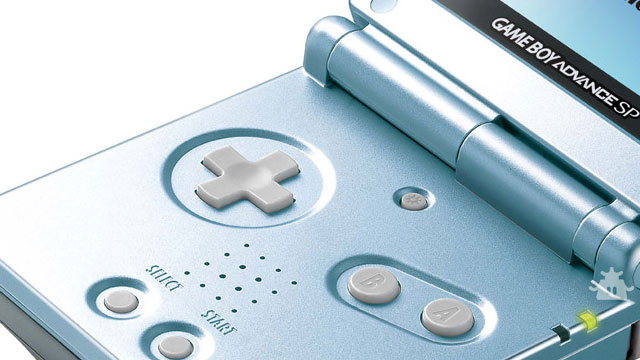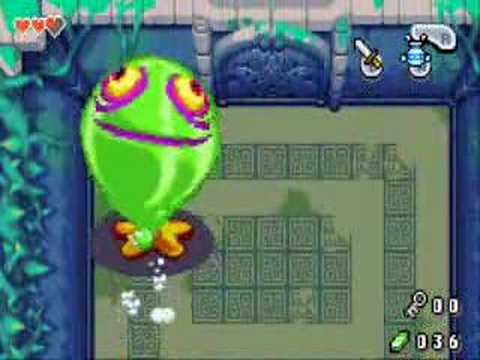
In 2001, Nintendo introduced the world to the next evolution of its handheld console, fittingly dubbed Game Boy Advance. The plucky little console was a marked improvement over Game Boy Color, featuring better graphics, backwards compatibility with previous Game Boy software, and a new, horizontal control orientation. The base model would quickly be replaced with the iconic Game Boy Advance SP, which adopted a clamshell design, rechargeable battery, and lit screen. Finally, in the twilight years of the system, Nintendo introduced the Game Boy Micro. A smaller version of the Advance, it lacked backwards compatibility, but was much sleeker and stylish than the SP. One system, three hardware designs, and sales in the millions.
GBA certainly remains a retail highpoint for Nintendo, eclipsed only by the gargantuan sales of its own DS and Wii consoles. What goes overlooked by many, though, is that GBA was almost singlehandedly responsible for keeping 2D video games alive. By the time GBA debuted in 2001, the world was enthralled with polygons and 3D gaming. Super Mario 64 had led the charge on Nintendo 64, and for years home consoles all but shunned 2D titles. There were games here and there, of course, but if someone really wanted to play a 2D platformer or a top-down RPG, Nintendo’s handheld was the the place to go.
One interesting aspect of the rejection of 2D on home consoles was the archaic notion that there was something supposedly old-fashioned about polygons and running left to right. Before Nintendo 64, PlayStation, and Sega Saturn, 2D gaming was the standard, not a genre or niche. No one looked at Ninja Gaiden on NES and said, “oh, that’s a 2D platformer!”, it was simply a platformer. When games like Mario 64 finally did come along and create the firm delineation between the two, 2D was suddenly seen as ugly, simplistic, and unwanted. Well, unless it was on GBA.

Handhelds weren’t anywhere near the horsepower of home consoles, so shrinking an SNES down into the palm of a person’s hands was still quite the feat, at the time. While developers worked the kinks out of camera systems and new control setups for N64 and PlayStation, GBA was decidedly more familiar and friendly. Ports came quickly, with everything from the original Super Mario Bros. games to Contra III being repackaged and polished for the new system, but it was also home to plenty of new ideas, too. Ideas that would otherwise have been left to die in the then-hostile climate of 2D game development.
Three such titles just came out on Wii U’s Virtual Console service; Metroid Fusion, Advance Wars, and Mario & Luigi: Superstar Saga. All three games are greatly loved by fans who got to play them originally, but it’s hard to imagine that if not for GBA, they probably wouldn’t exist. Fusion, in fact, came out the same day as the release of Metroid Prime, which itself was a 3D reimagining of the series’ traditional play control! Still, exist they do, and helped to keep the roots of modern video games known to an entire generation of players.
GBA brought us a wealth of 2D games that easily matched the quality of what was released on SNES and Sega Genesis. Series like Fire Emblem, Pokémon, Metroid, Castlevania, Sonic the Hedgehog, Pokémon, Warioware, The Legend of Zelda, and many, many more graced players with some of their best games. What was most important about the preservation of 2D on GBA was that a lot of games simply didn’t work as well in 3D to begin with. Further compounding the issue was that a lot of people weren’t comfortable playing 3D games, either. Some developers of the era, like Namco’s Hideo Yoshizawa, actually found titles like Mario 64 too hard to play and sought ways to find a compromise. His game Klonoa: Door to Phantomile was created to do exactly that, as it featured 2D gameplay in a 3D world. It was a tough sell, though, and if not for GBA, only quirky, random projects like Klonoa would have offered respite to 2D gamers.
So thank you, GBA, for being the shelter for the once dwindling fire of 2D gaming. Now, 2D has come back in a big way, championed by Nintendo and a whole host of forward-thinking indie developers. It took awhile, but it’s becoming a safer world for 2D games. Here’s hoping that Nintendo’s GBA initiative on Wii U is a rousing success, so that we can continue to see the excellent games from that system made available for today’s players to enjoy. Now if we can get that Mother 3 release in the bag, it’ll be a perfect world.




 ShareThis
ShareThis







I will always look to the GBA as my first personal console. Before that, I had to share the GB/GBC and N64 with my brother. When I finally left home to join the military, the GBA had just launched. Having to constantly travel, it was impractical to lug a standard console (and TV) from place to place, so the GBA became my best friend. Even before the SP launched, I outfitted it with every accessory possible: screen cover w/light, rechargeable battery, face-plate complete with thumbstick, the works. While Nintendo has made some upgrades of their own since then, I will always remember the GBA as one of a kind.
The GBA was when I first started buying games on my own. In college, I would head down to GameStop and see what gems were laying around.
I remember back in middle school everybody had a GBA. The only ones who didn’t were preppy kids who’s parents wouldn’t let them have one because they can’t make straight A’s if they’re brains are rotting out playing Pokemon with their friends all day. Heh, I’ll never regret being a B- student because I was on my SP all the time. Sure, I’ve grown up since then and am taking college seriously, but your childhood is precious and should be lighthearted.
Sorry for the bad grammar, btw. Can’t edit comments.
GBA also gave us a lot of 2D movie licenced games. Sure, most of them are pure garbage, but I still appreciate the weirdness of playing Pirates of the Caribbean with sprite-based graphics in it.